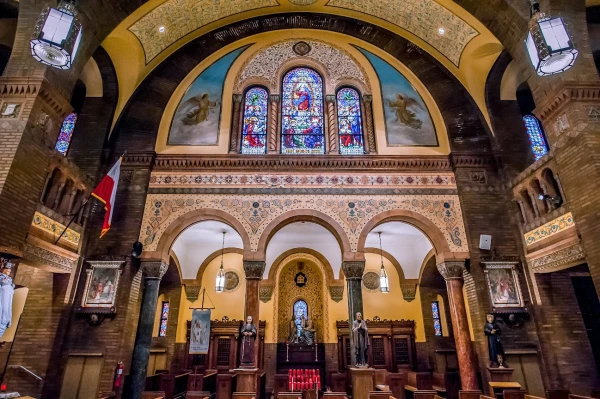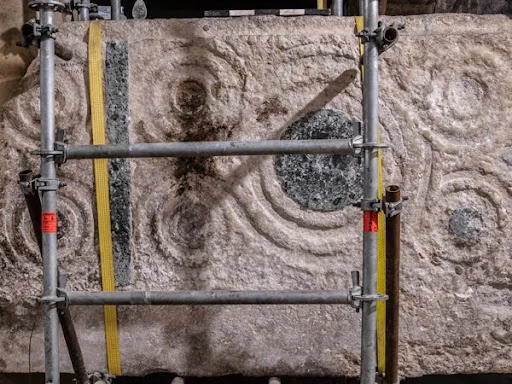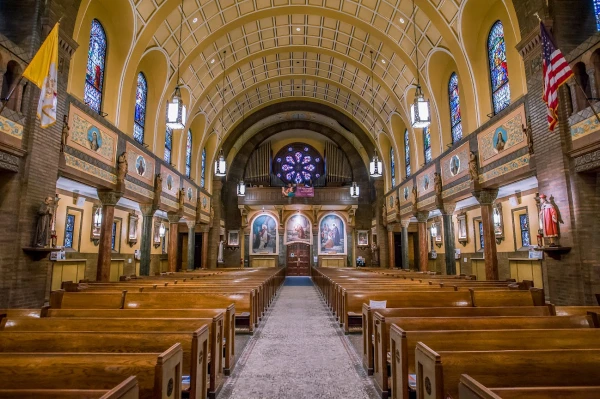The church’s richly adorned exterior includes multiple cupolas, a towering 65-foot dome, and a large rose window on a facade set off by eight stone millions. Visible on the facade is a terra cotta mural depicting Christ the King, St. Casimir, St. Stanislaus, and St. Hyacinth.
The interior of the church, meanwhile, includes murals by Marion Rzeznik, a Polish native born in 1899. Among its architectural features are a fully preserved ambo including the original abat-voix, a barrel-vaulted and coffered ceiling, statuary lining both sides of the pews, and the original ad orientem high altar over which is a rendering of the coronation of Mary, the Mother of God.

Krysa told CNA that the church offers Masses that employ the “five senses” — sight, taste, touch, hearing, and smell.
“During every single worship, liturgy, or devotion, all the five senses are engaged in praising and experiencing God,” the priest said.

“Our main mission is to continue our heritage, which is an ethnic Roman Catholic heritage,” the priest added. He explained that though the church started out as a Polish parish, “we’re diversifying.”
St. Casimir was first made an oratory in 2009 before receiving its present free-standing designation in 2011, Krysa said.The free-standing designation means that the church “is canonically aligned with the diocese,” Martone told CNA. “Other churches in New York are separately incorporated. So, St. Casimir is a free-standing church under the administrative jurisdiction of the diocese.”

Hosting the future Pope John Paul II
(Story continues below)
Subscribe to our daily newsletter
The church’s Polish roots became known around the country in 1976 when St. Casimir was paid a visit by then-Cardinal Karol Józef Wojtyła. The prelate in two years’ time would go on to be elected Pope John Paul II.
Wojtyła was visiting the United States as part of that year’s International Eucharistic Congress; during his visit he traveled across the country, stopping in Buffalo to visit the city’s large population of Polish immigrants.
“He was awestruck about this church. He loved it,” David Grzybek, a lifelong member of the parish, told the Buffalo News last month.
Wojtyła stayed two days at the parish. The bedroom in which he stayed has since been preserved as a memorial to the historic pope, its spartan interior remaining identical in appearance to when the cardinal slept there nearly 50 years ago. The room is used by the faithful for prayers, Krysa told CNA.
Credit: Source link





